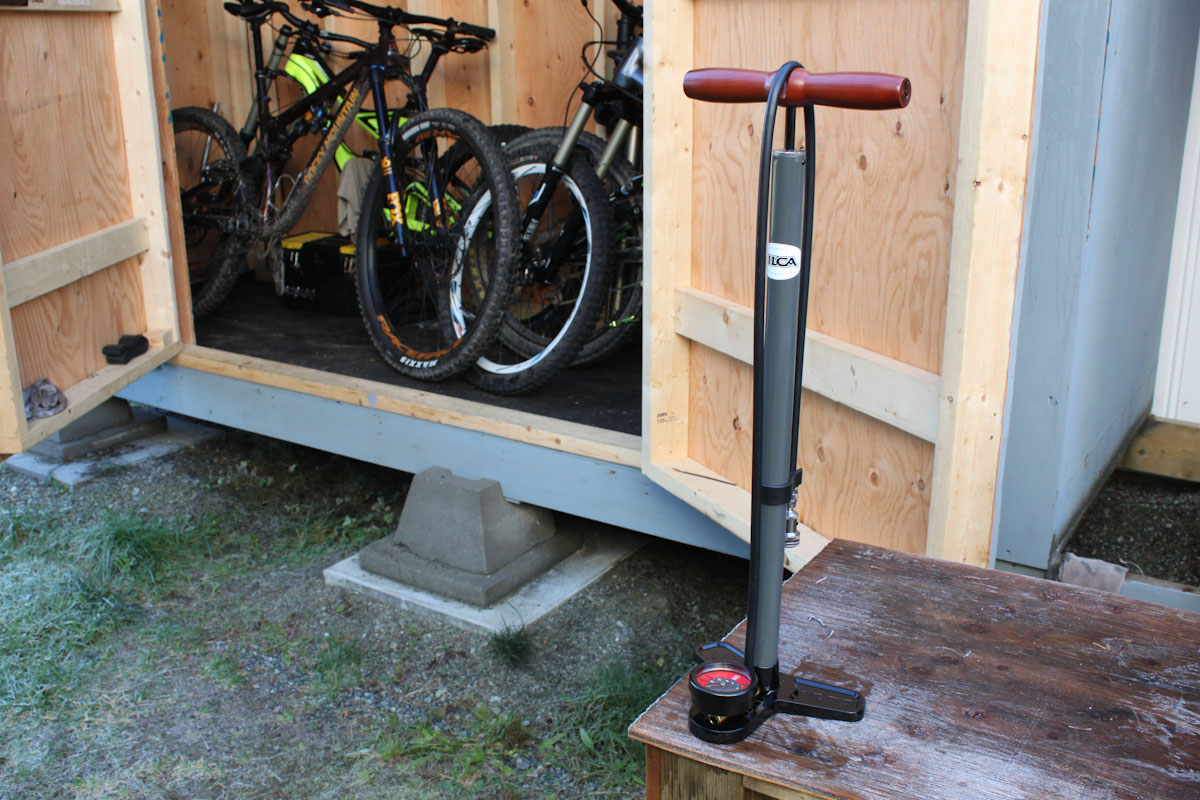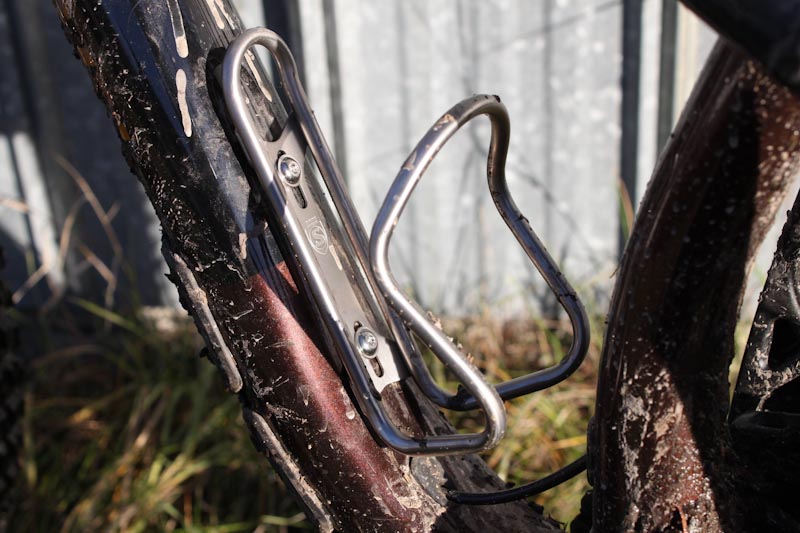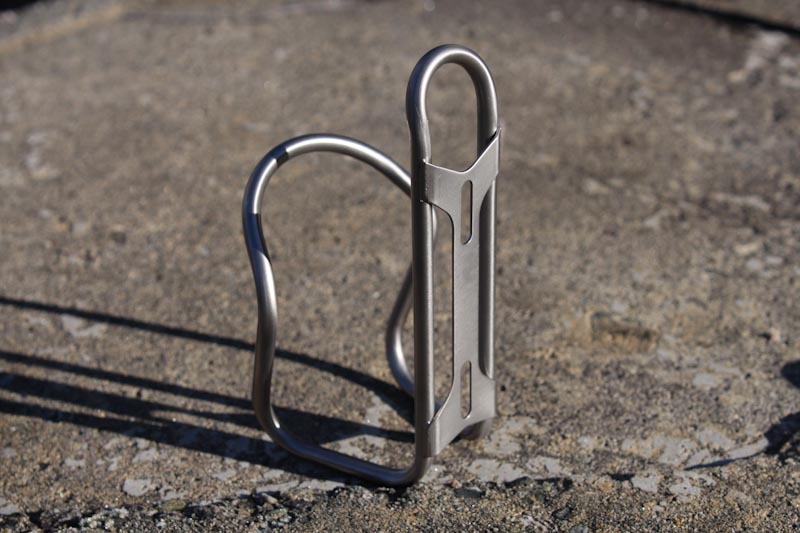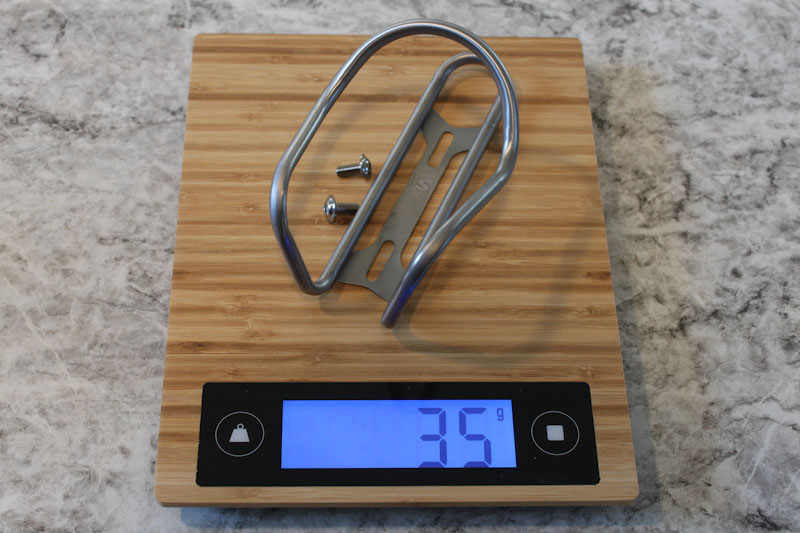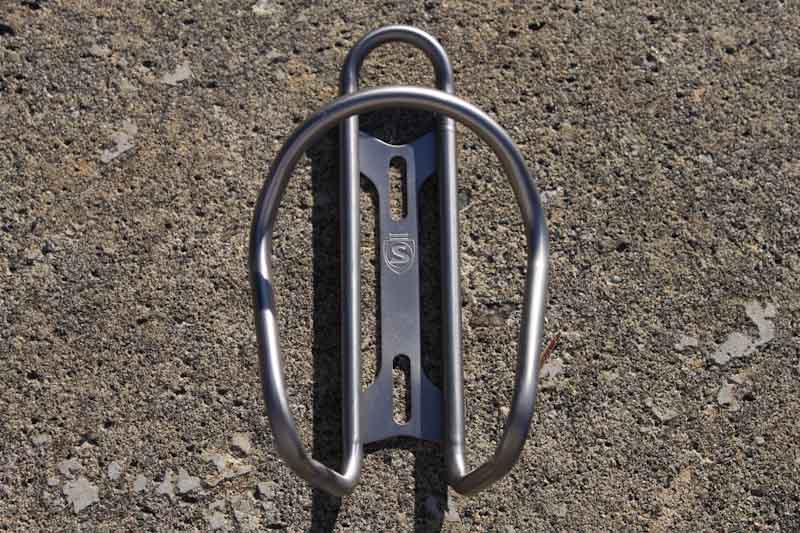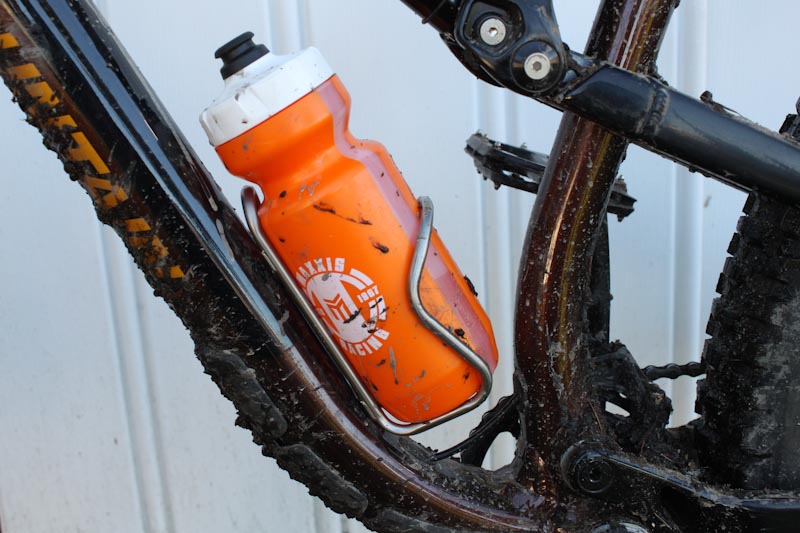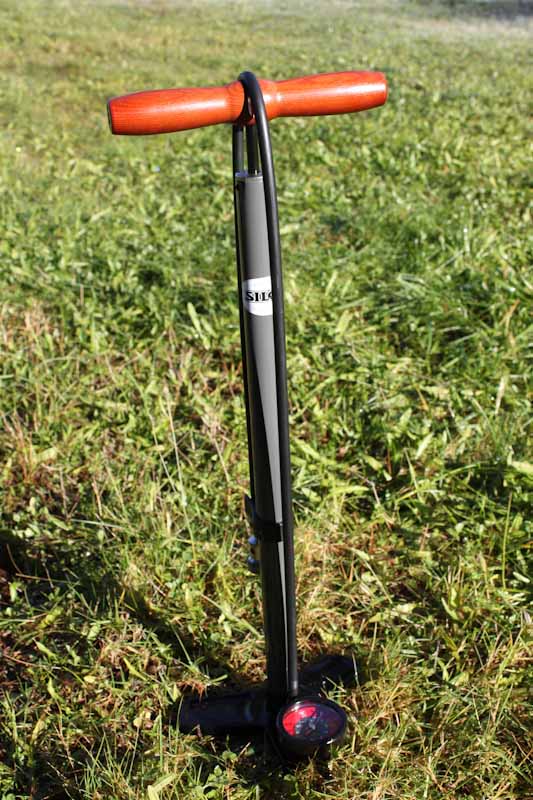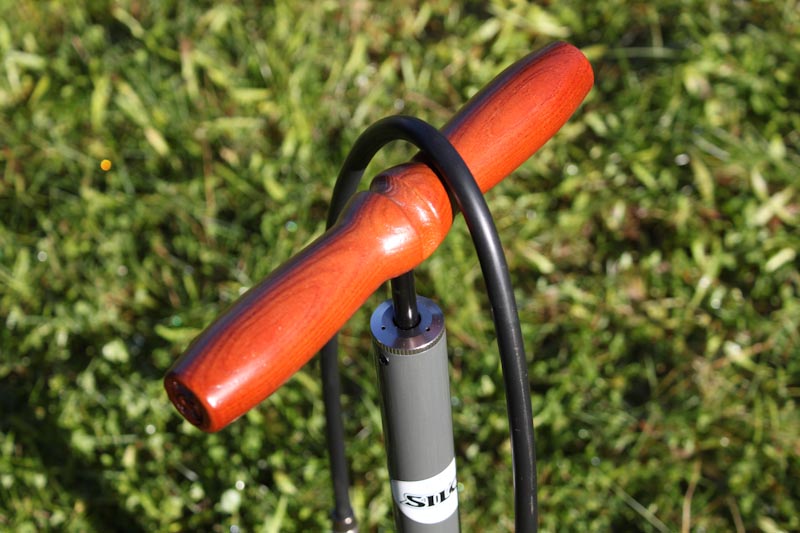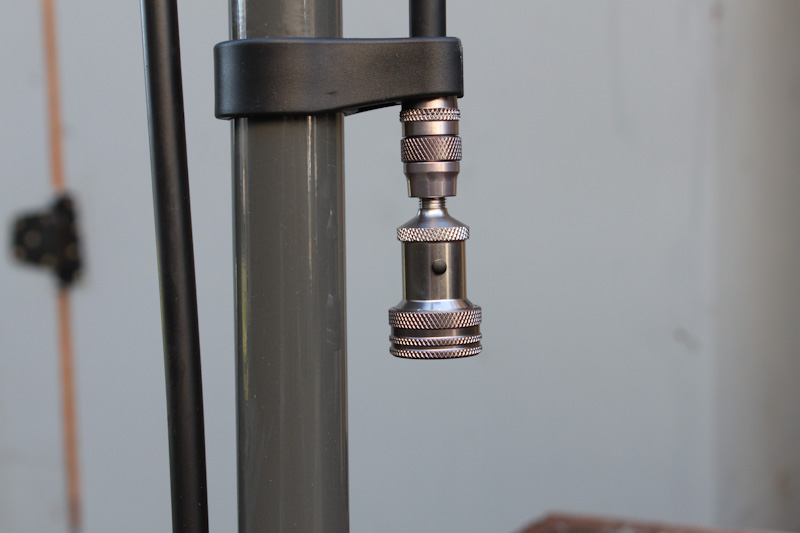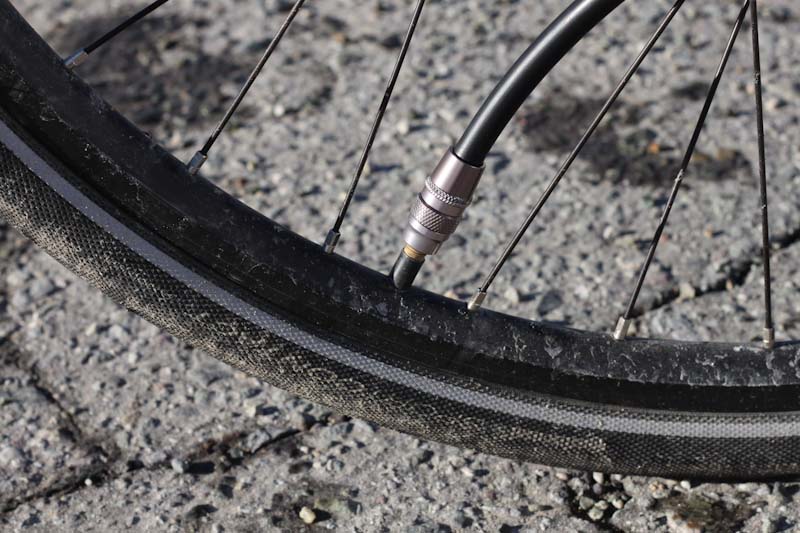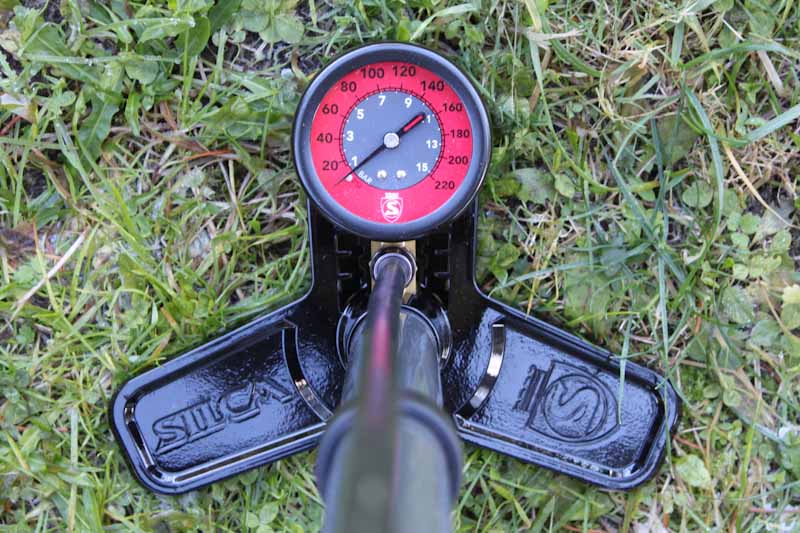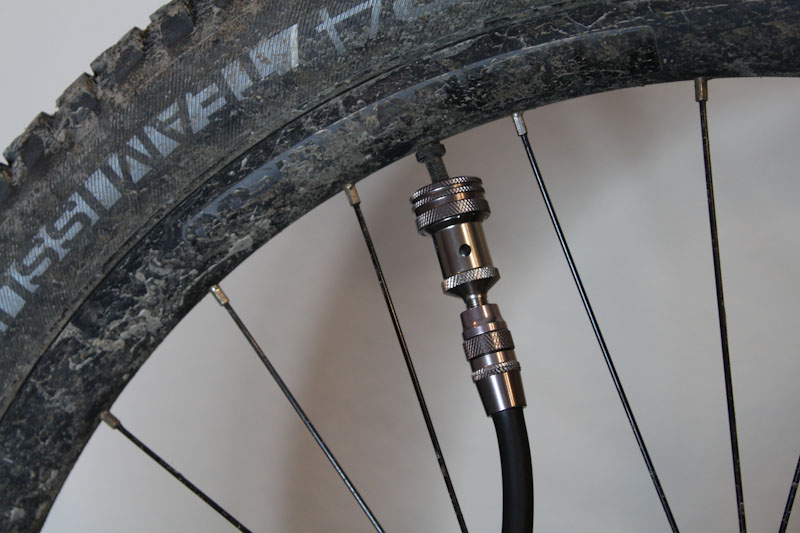Silca is generally known for their premium-grade products, so I was pleased to get a chance to test out their latest Pista Plus floor pump and the Sicuro titanium bottle cage. Right away the construction and detailing of both impressed, and after my test I’d say their reputation is well earned.
I’ve taken the Sicuro Ti cage out for many MTB rides, and despite its feathery weight it’s never dropped my bottle through several weeks of enduro-style trail testing. I’ve also since been using the Pista Plus pump on all my bikes – road & trail. And while some of the features aren’t the best for off-road riders, its construction & functionality leave nothing to be desired.
Sicuro Ti Bottle Cage:
We checked out Silca’s Sicuro Ti water bottle cage at Eurobike last year, and since then I’ve put it to the test. I hit the trails to see how it would handle the rigors of mountain biking, and as rowdy as I could ride this lightweight cage had no problem holding my bottle securely.
Part of Silca’s Ultimate product line, the Sicuro Ti cages are hand-made in Indianapolis, IN. The cage’s tight welds are made by a laser welder, which Silca says is a bike industry first. They’re then hand-polished, sealed, and stamped with the Silca logo. The machined titanium mounting bolts were specially designed with wide, low profile heads. This maximizes their contact area, improving both bottle retention and cage life.
The Sicuro Ti cage is light, with my scale showing 33g (a bit more than Silca’s claim of 29g) plus a gram for each bolt. While it’s not the lightest ti cage available, only the weeniest of weight-weenies would shrug this off as ‘too heavy’.
Keeping the design simple, the Sicuro cage uses a typically-shaped loop of 3/2.5 titanium tubing to hold the bottle. The mounting plate has long slotted holes that allow you to adjust the cage’s fore/aft position by about 15mm – a big plus when your bike is tight on space.
On the trails, I found the Sicuro’s Ti tubing offers a little flex which made slipping the bottle in and out easy. This was handy in my case, since I had to angle my bottle around a piggyback shock on the Rocky Mountain Instinct BC Edition I was riding. The strong but flexy ti tubes held my bottle without fail through dozens of rough descents, so I can’t imagine it having retention issues in road or gravel bike applications.
If you’re looking to dress up your bike with a high-end, lightweight bottle cage that you plan to keep for a long time, the Sicuro Ti justifies its $70 price tag with a 25 year warranty.
Pista Plus floor pump:
Silca has been making bike pumps for quite a while, you might say… the company did turn 100 in 2017! I jumped at the chance to replace my dying floor pump with their Pista Plus, and I’ve come away impressed with its quality finish and feel.
The Pista Plus floor pump first debuted back in 1962 and features a steel barrel, which houses German Igus linear bearings (engineered plastic slides that are said to outperform rotating metal bearings) to guide the plunger. Silca uses a 3mm thick Italian leather plunger washer, and a brass air bridge & check valve assembly to ensure durability. If anything ever fails, the pump is rebuildable.
Looking over the Pista Plus, Silca’s attention to detail is apparent. The nicely shaped, machined wooden handle has Silca logos etched into each end and a smooth groove to hold the hose in place without kinking it.
The Pista Plus’ thread-on schrader chuck is attached to the hose, while the push-on presta chuck threads into the schrader. The pump’s chuck dock was revised so it now holds the hose just above the schrader chuck. This way, riders can install/remove or swap the presta chuck for Silca’s HIRO chuck or Disc Wheel Adapter while the hose is conveniently held in place.
I found the push-on presta chuck worked well on several different wheelsets (tubed and tubeless), and will grab pretty short valves. The chuck requires a good tug to remove, but that’s a worthy compromise for its snug fit.
Silca’s presta chuck has a built-in bleed valve, which can either blow-off the hose pressure or drain air from the tire. If you have a nice straight valve core pin and the chuck isn’t pushed deep down on the valve, the bleed button will simply blow-off the hose’s pressure. If you angle the chuck or push it on firmly, the bleed button can open the valve core and allow you to drain the tire down to a desired pressure. Silca pointed out that bent valve pins may push open the valve core more easily, so you may have issues blowing off the hose pressure (and not draining the tire) with crooked pins.
The schrader chuck threads onto valves nicely, and pumps perfectly well. Also, with schrader valves the gauge will show a psi reading as soon as the chuck is threaded on. With the presta chuck, it’s capable of showing an instant reading if pushed on firmly enough to open the valve core, but I found it typically requires a pump stroke to pressurize the system and produce a psi reading.
With its large ash handle and stable three-footed cast aluminum base, the Pista Plus is primarily intended to stay in your workshop. Its 64mm gauge is fairly big, and Silca used high-contrast colors to make it easy to see. As a mountain biker I would have been happier with smaller increments on the gauge, as it only has graduated markings at every 5psi. If you’re picky about dialing in your pressures to the pound, you’ll probably need to use a separate gauge with 0.5 or 1psi increments (as many riders do anyways to ensure consistency).
I wouldn’t recommend this pump to fat bikers, as the gauge isn’t marked at all below 15psi. The Pista Plus maxes out at 220psi, so it’s more than capable for any other type of bike, decidedly favoring high pressure use.
Working with the Pista Plus, you feel right away that quality is Silca’s game. The piston glides nicely on the Igus bearings and the pump produces a satisfying sound and feel with each stroke. The chucks grabbed all my valves reliably, and I never had any functional issues with this great looking pump.
Any commuter, gravel, or road rider would probably be very pleased with the $145 Pista Plus for many years. But personally, I’d still like to see smaller than 5psi increments on the gauge. While it does pretty well considering its small barrel, MTB riders will probably prefer something that moves more air per stroke, and has a gauge that reads lower pressures right down to the pound. I’d love to see an MTB-specific model from Silca come along otherwise with the same tech & attention to detail!
